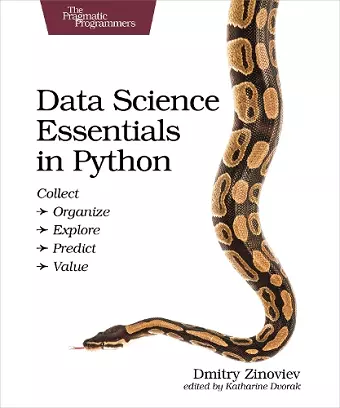Data Science Essentials in Python
Format:Paperback
Publisher:Pragmatic Bookshelf
Published:9th Sep '16
Should be back in stock very soon

This non-fiction paperback, "Data Science Essentials in Python" from Dmitry Zinoviev, was published 9th September 2016 by Pragmatic Bookshelf.
ISBN: 9781680501841
Dimensions: 194mm x 239mm x 15mm
Weight: unknown
200 pages